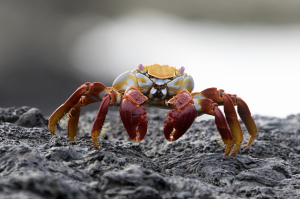
Jess and I took a 10 day cruise aboard Quasar’s MV Evolution last June. It was an incredible voyage full of amazing luck! Even though I say “luck,” wage changes in the Ecuadorian government roles brought strikes and El Nino historically hasn’t played nice with the animals, but… due to the strikes, we got more landings because we got to skip those “tourist days” in town and El Nino showed us every single animal species in all phases of their mating cycles. For example, we should have only seen a handful of Blue Footed Boobies, but we saw thousands everywhere we went. They were also hunting for mates, hatching eggs, and nursing adolescent chicks.
But you’re wanting to read about what gear worked for me. In May of 2015 I wrote about what photography equipment we packed for the Galapagos. A few months later I can say there aren’t many things I’d change if going again other than my camera bag. I would take the exact same lenses and bodies (except I have a 5DsR now, so I’d take that instead of the 1DsIII):
- Canon 1Ds Mark III (3 lbs)
Canon 7D Mark II (2 lbs)
Canon 400mm f4DO IS + 1.4x teleconverter (5 lbs)
Canon 100-400mm f4-5.6L IS Mark II (3.75 lbs)
Canon 24-70mm f4L IS (1 lb)
Camera bodies
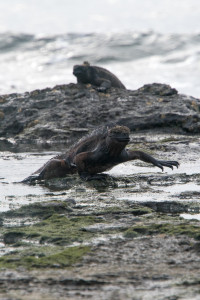
Before the trip, I toyed heavily with getting a Canon 5D Mark III to compliment my 7D Mark II because they both use the same batteries. When you’re involved in wet zodiac landings with thousands of dollars worth of electronics on your back it is in your best interest to unencumber yourself as much as possible; ever ounce helps. 1D batteries are larger and the 1D, itself, is an extra pound of weight. Not to mention two different body types equates to two different types of battery chargers. So, I added roughly 2 pounds and took up enough room to have packed another lens by bringing two very different camera bodies. In reality, it wasn’t that big a deal despite what you’ve read thus far. The Canon 1DsIII is a magic machine that produces incredible pixels. That body paired with the Canon 100-400mm Mark II was insanely good! The 7DII pretty much stayed on the 400mm DO lens the whole time and I’m super pleased with the performance of that combination.
Focal Range and lenses
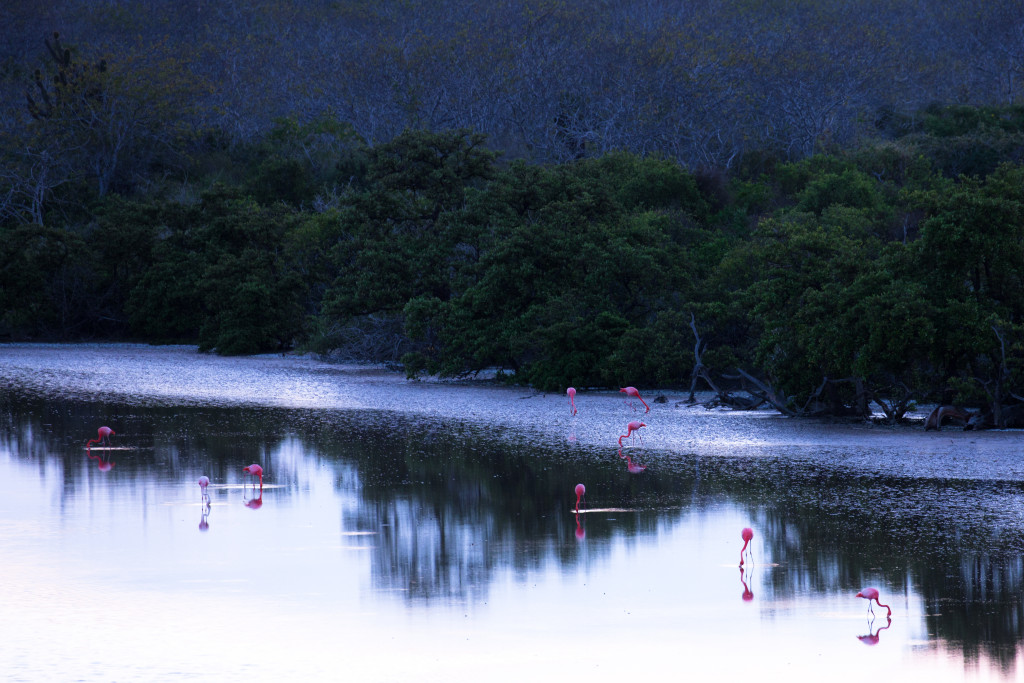
There is a lot of stuff out there saying you don’t need more than 200mm because the animals are easy to get to and, well, sure, BUT. My favorite wildlife images were made with the Canon 7D Mark II + Canon 400mm DO IS + Canon 1.4x teleconverter combination. That is equivalent to 896mm on a traditional full frame 35mm camera even though it is technically 560mm. But my point is, no matter how you want to do the mathematical focal length conversion, it is far longer than 200mm.
In fact, I think most of shots were more on the telephoto side. Of course I used the 24mm end on the giant tortoises and some landscapes, but my go to lenses were all white.
Filters
I used a circular polarizer nearly the whole time. I didn’t always set it for each shot, but I left it in the 400mm most of the time and definitely used it when shooting with the 24-70mm.
A Circular Polarizer will help remove glaze, shine, and enhance colors when shooting wildlife in the Galapagos. This is especially noticeable on the Sally Footed Crabs whose colors are so great and their shells can reflect white sunlight that is super noticeable in a photo. I highly suggest having a circular polarizer in the Galapagos.
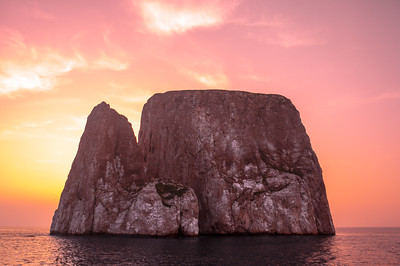
Other polarizers to consider would be neutral density ones that either allow you to align your exposure through a graduated dark to light filter or completely darken the image to allow for a slower exposure. That question is best answered by the type of shooting you want to do. I did bring my trusty old 3.0 Neutral Density filter because I wanted to capture crabs with waves breaking on them, but I never used it. The tripod required for those kind of images, that came along, also was never used.
I was more interested in shooting wildlife than landscapes and didn’t use the tripod I packed nor the neutral density filter.
I did bring a Singh-Ray Blue N Gold filter that was a lot of fun to play with. Because the sun was so bright due to the absence of cloud cover sunsets and sunrises weren’t that exciting on our trip. Fortunately, the Blue N Gold gave me some magenta skies to at least have something that looked like a sunset when we were leaving Kicker Rock.
Tripod vs. Image Stabilization

I packed my favorite travel tripod legs and head: the Gitzo GT1514T & Markins Q3 but didn’t use them. Instead, I relied on Image Stabilization built in my lenses. We never had a dark day on our trip, so I got to shoot at super fast shutter speeds. And there was only one landing that worked really well to get the sally footed crabs in the waves shot I packed the tripod for. Unfortunately, I left the tripod on the boat that time because it was later in the trip and I had already figured I wasn’t going to be using it. Fortunately, I’m really good at keeping my body steady when shooting, so I can sharp shots hand holding the 24-70mm f4L IS down to half a second and sometimes a full second! Unfortunately, I never got the kind of crab shot I envisioned before going to the Galapagos. There’s always next time!
Carrying the gear
I lost my mind trying to figure this out prior to leaving. I was so unhappy with how poorly things went with my carrying decisions in Antarctica there was no way I was going to make the same mistakes. My problems in Antarctica were due to Nazi gate agents not liking the weight of my carry-on…those suspicious bastards! I was forced to check my camera equipment on the return flight from Chile to Miami. NEVER AGAIN!!!

In the article I wrote before leaving I said I was going to use the F-Stop Tilopa BC with F-Stop’s smaller internal units to be able to shift gear around in case I met another Gestapo gate agent. At the last minute I changed everything to the Think Tank Streetwalker Hard Drive because the Tilopa seemed too big when packed. I was concerned I was inviting suspicion all over again. I’m really glad I made this last minute decision because the Think Tank was just right with the exception of having to rely on Jess for carrying my big noise-cancelling headphones. Jess used the Lowepro Flipside 300 by the way. That worked well for the Canon Rebel XSi, Canon 24-105mm f4L IS, and Canon 70-300mm f3.5-5.6L IS she carried plus sun & insect blocking stuff.
 My only gripe with the Think Tank backpack is the same gripe I have with all Think Tank backpacks: the shoulder straps are better for airports than hiking. In fact, Think Tank bags are made more for civilized environments, so they now have the Mindshift Gear line for outdoor products. I’m in the process of acquiring bags from that line.
My only gripe with the Think Tank backpack is the same gripe I have with all Think Tank backpacks: the shoulder straps are better for airports than hiking. In fact, Think Tank bags are made more for civilized environments, so they now have the Mindshift Gear line for outdoor products. I’m in the process of acquiring bags from that line.
I also took my Think Tank belt system in the thoughts that much of my shooting was going to be on the fly trying to keep up with the tourist group we booked with (we were not on a photography cruise). Fortunately, the gear I was using and the images I captured got everyone’s attention so eventually people wanted to linger with me instead of moving on if I was getting a shot. So, I never used the full belt system, but I did employ components to make access easier on the outside of my bag.
Keeping gear dry
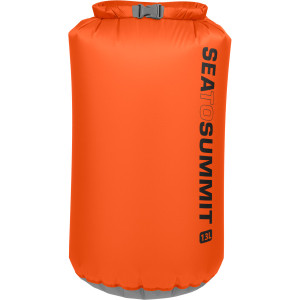 Despite the first night being so rough the kitchen and galley were on the floor the next morning we had nothing but smooth panga/zodiac landings. Both Jess and I would have fine with just our backpacks protecting the gear. But we both took dry bags that we use when kayaking. The peace of mind makes them invaluable. If you get larger dry bags than you think you need they are not a burden to use. On top of that dry bags compress and pack incredibly small, so the difference between a 5L and 10L bag isn’t much inside your luggage. What does make a difference is how wide the mouth of the bag opening is or how deep the bag itself is. We used 2 different 5L bags and a single 13L bag. Jess’s gear was small so any combination fit in her slimmer 5L bag that I don’t recall the brand of…the funny thing is hers was more expensive and I like the material better.
Despite the first night being so rough the kitchen and galley were on the floor the next morning we had nothing but smooth panga/zodiac landings. Both Jess and I would have fine with just our backpacks protecting the gear. But we both took dry bags that we use when kayaking. The peace of mind makes them invaluable. If you get larger dry bags than you think you need they are not a burden to use. On top of that dry bags compress and pack incredibly small, so the difference between a 5L and 10L bag isn’t much inside your luggage. What does make a difference is how wide the mouth of the bag opening is or how deep the bag itself is. We used 2 different 5L bags and a single 13L bag. Jess’s gear was small so any combination fit in her slimmer 5L bag that I don’t recall the brand of…the funny thing is hers was more expensive and I like the material better.
I used an Overboard 5L dry bag to fit my big 1DsIII body into with a lens attached. The 24-70mm fit with ample room. I could only fold the bag roughly 2.5 times with the 100-400mm and 1D combo. 3 rolls is full waterproofing.
For the 7DMKII and 400mm DO + 1.4x TC combination I had to flip the lens hood around to get the Sea to Summit 13L dry bag sealed. You could go up to the next size and probably keep the hood in shooting position, but I prefer the smaller size of the bag. I also have Sea to Summit’s larger 35L bag for carrying my bigger lenses on the kayak, and that would be a great Galapagos option for anyone carrying a Canon 500mm f4L or 400mm f2.8L lens.
Underwater
My favorite part of the trip was snorkeling. Swimming with sea lions and sharks was soooooo amazing!

I’m part fish and grew up in Virginia Beach surfing. I love sea water and have been stung by jellyfish so much I don’t even notice anymore. Sea lice still itches, but that’s just part of the ocean experience. I also don’t mind the salt water sting in the eyes. My wonderful Vermonter fiancé didn’t feel the same way. Jess might have experienced her first jellyfish sting or sea lice entanglement (we’re not sure what kept getting her) on this trip. She also struggled with the salt sting in her eyes. She enjoyed swimming with the animals, but she wasn’t into the water like I was. Even though we’re talking about camera gear this is something to consider. We took our own masks and snorkels and relied on our own rash guards instead of the dingy old spring suits (wetsuits) the boat provided. Neither of us found the water or air chilly, but we do live in Vermont. Some of our older shipmates were thankful to use the wetsuits. And I should mention that Jess was not the only one to have issues with the jellyfish and/or lice. You’ve been warned!

We took a pair of Olympus TG-3 point and shoot cameras for underwater photography. It was my first time shooting underwater so I can’t speak to what would have been better or worse, but these camera got the job done in my opinion. It was nice not having to worry about a camera housing system while being able to use the camera just like I would on land.
Memory & Batteries
With my only prior experience for shooting wildlife on a trip like this being in Antartica I assumed I was going to be filling memory cards on every landing. With Linblad/National Geographic’s photography tour to the Falklands and South Georgia Island we would typically walk to one location and stay there for hours. With the amount of wildlife and scenery found at that one spot it was easy to take 1,000 photos on a single landing (it is so beautiful). That is not the case in the Galapagos.
Animals don’t cluster like penguins, albatross and elephant seals due to only a handful of beaches being accessible amongst the mountains. In the Galapagos every beach is accessible and there are tons of them. This means animals are all over the place and you have to walk around to find them all. There are a few exceptions in booby and frigate nesting areas, but the land iguanas certainly aren’t hanging out together. Yes there are penguins, albatross and seals in the Galapagos, but things are vastly different for the warm climate species.
I did not need to take the amount of memory cards I did. Offloading each day’s images made it so I only needed the CF And SD card combos each camera body could hold. I took around 8,000 photos over 10 days shooting solely in RAW mode. My 256GB MacBook Retina’s hard drive was plenty and I used a 1TB external drive as backup to that. Fortunately I had zero issues and was able to exchange images/videos with the naturalists with room to spare.
My rule for memory cards: Get the size that allows for 1,000 RAW images per card in each camera slot for your camera. Then buy the fastest cards you feel comfortable spending the money on that are available to buy.
Following my memory card rule… both the 1DsIII and 7DII are roughly 20 megapixel cameras with dual card slots. This means a 32GB memory card will hold around 1,000 images off of these cameras. I find a 95MB/sec transfer speed to be sufficient for the 1DsIII (the way I use it), but not even close to fast enough for the 7DII’s buffer when shooting in high speed. That camera can benefit from super fast cards, but this is where the money can get crazy. Because the costs of super fast cards were over $500 when I got my 7DMKII I use a single 160MB/sec CF card and back that up with a 95MB/sec SD card. The difference is quite noticeable between the cards, but I know how to work it after some experience.
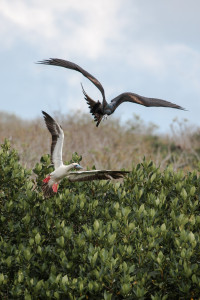
Batteries weren’t that big of a deal because we could charge in the room and I brought an outlet extender knowing we only had a single wall outlet in the room. The bigger issue was coming back exhausted/hungry/thirsty from a day’s worth of landings and dives thus forgetting to throw a battery on the charger that night. This happened twice so I was glad to have a second battery for each camera body. We did not have extra batteries for the Olympus TG-3’s, but Jess didn’t care for underwater photography after her second dive so I ended up having a spare.
Best gear advice I can give you
Camera gear fogs when moving from cool air-conditioning to humid tropical air. This impacts the camera body, lenses, and even filters (although they’re easier to defog). If you leave your camera equipment in your air-conditioned room and then run straight out for the morning landing you are not going to capture any images for up to one hour while your gear defogs. Find a way to let your gear sit in the outside air for at least 30 minutes before you want to take pictures. If you aren’t on an air-conditioned boat, then this advice does not apply to you.
You can find more images from my trip in my Galapagos photography gallery.